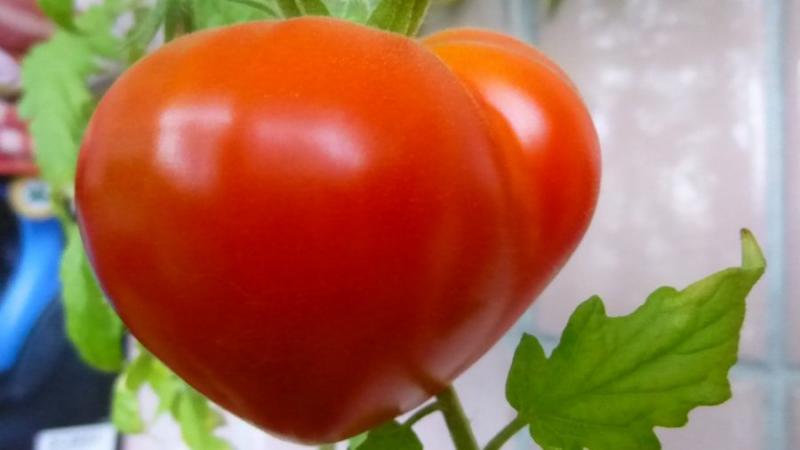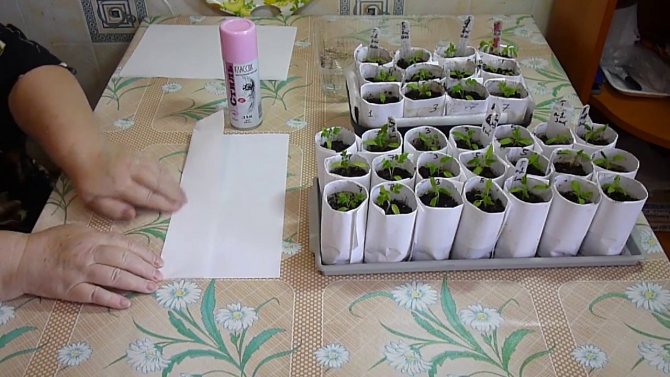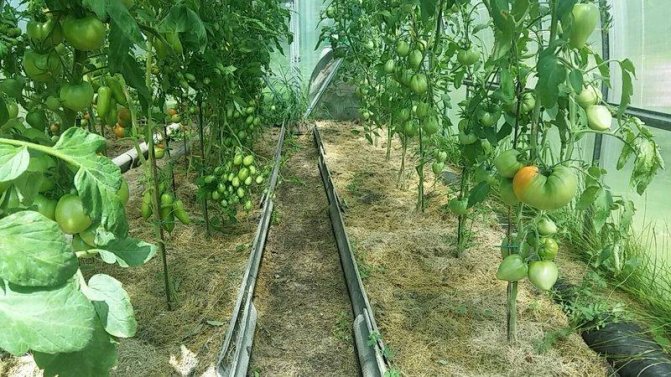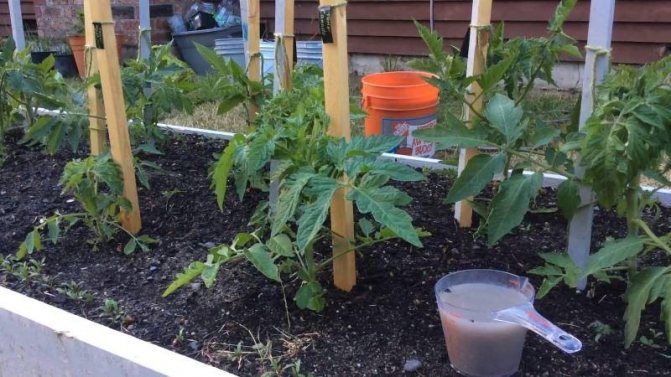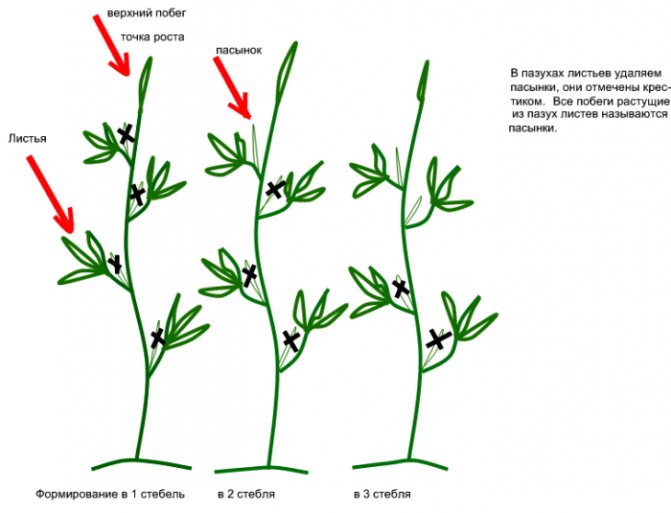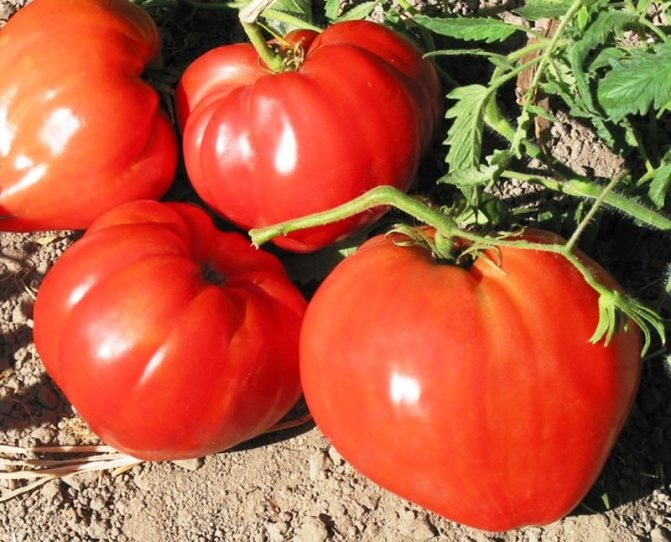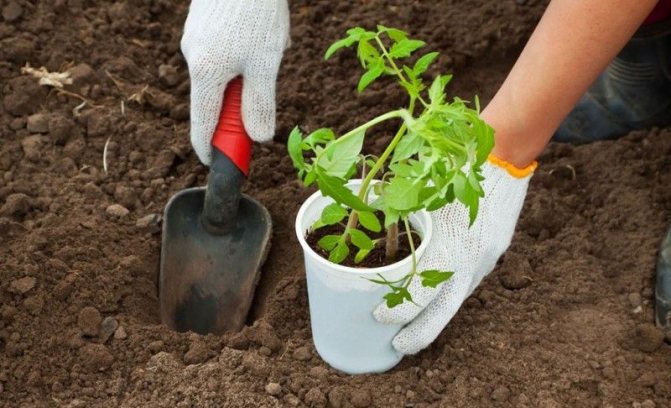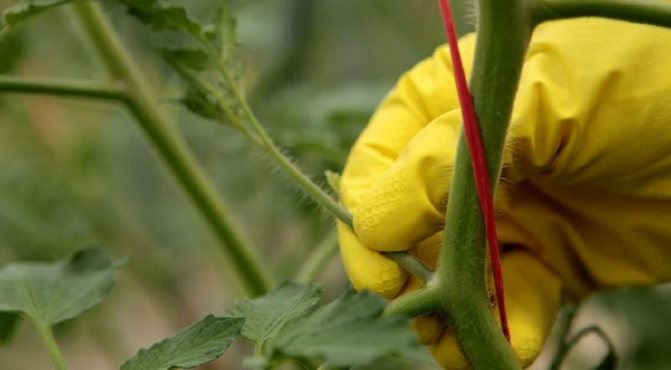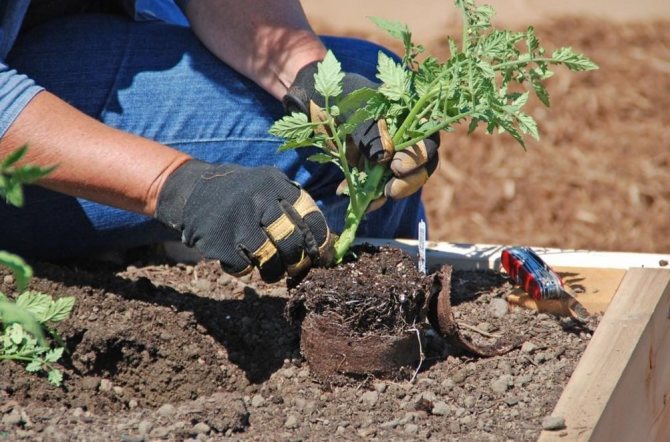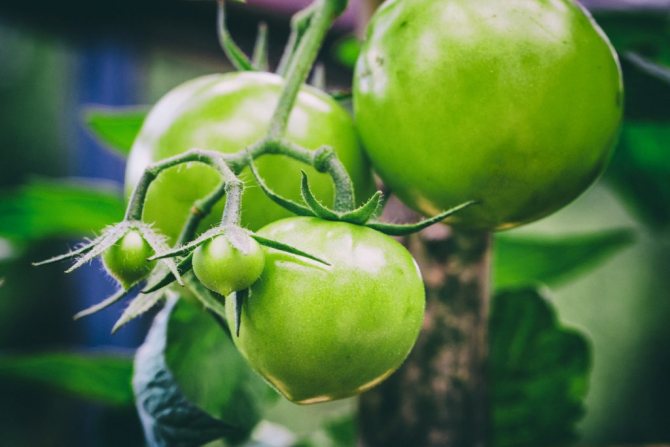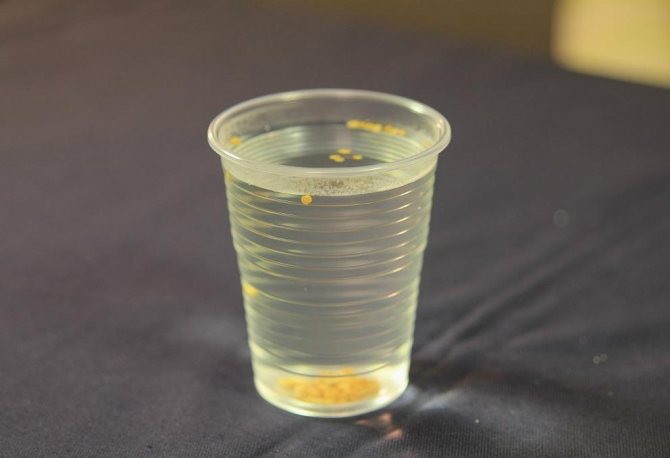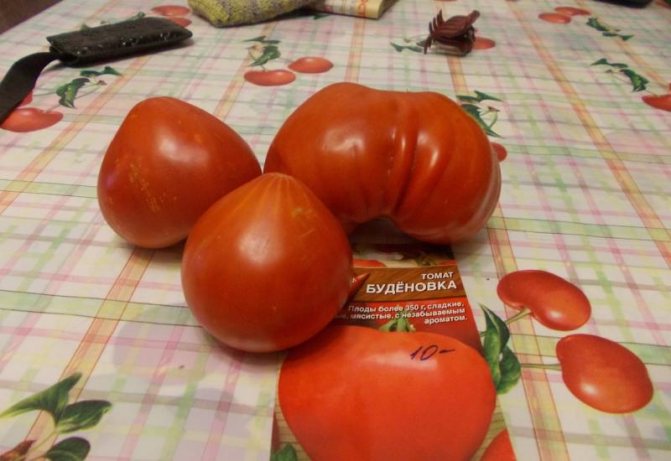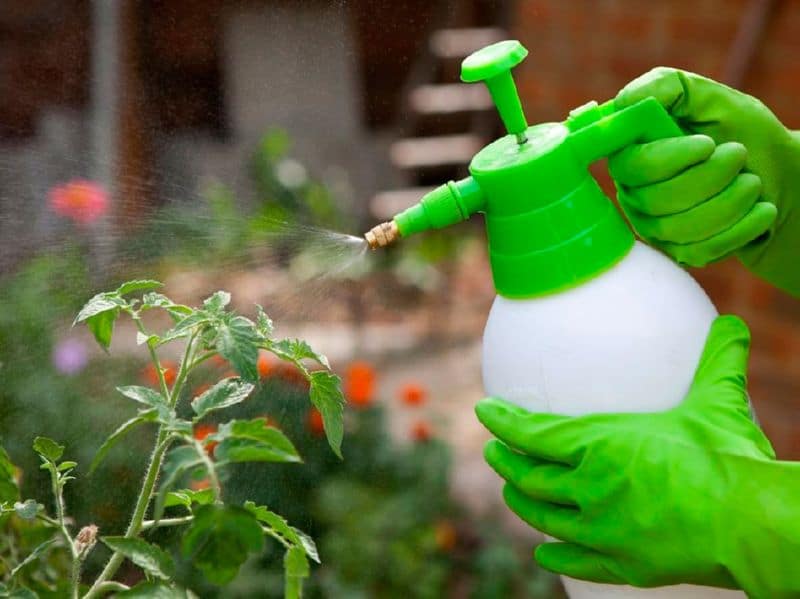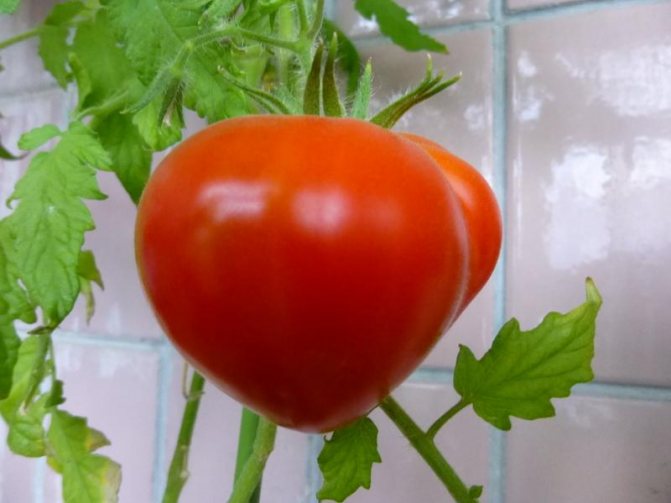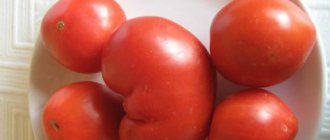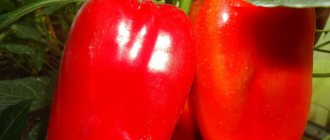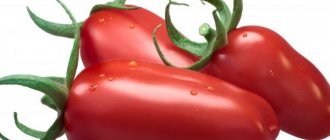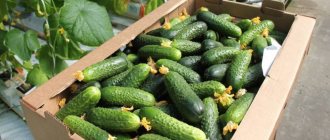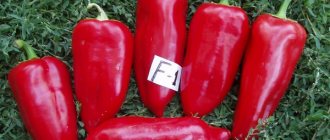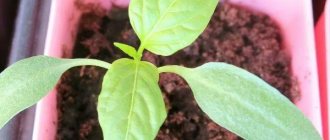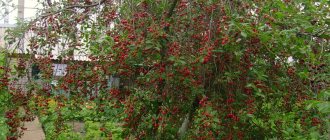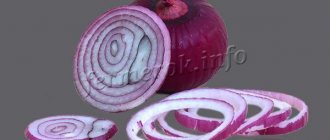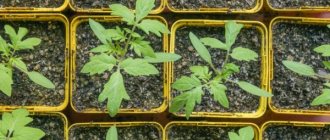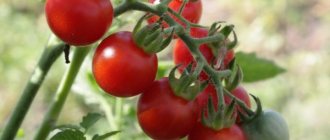Tomato is a vegetable that no summer feast can do without. It is good as slicing, but it is not uncommon to add tomato to salad. In addition, tomato fruits are often used for casseroles and cold snacks. In order to choose a quality product and not spoil the taste of the dish, you need to be at least a little familiar with the varieties of tomatoes. After all, they are sweet and sour. Of course, it is better to collect your own tomatoes from the garden and prepare different delicacies from them, but an experienced gardener should know that each variety has its own purpose, some of them differ in their uniqueness, because they are suitable for all types of dishes and snacks, such as tomatoes " Budenovka ". You will learn everything about this variety, up to care during cultivation, from our article.
Description of the variety
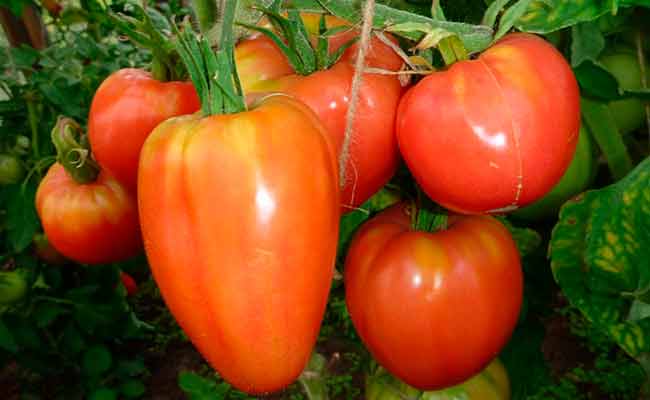
Varietal characteristics make these tomatoes attractive to gardeners. According to the description, Budenovka is perhaps the most unpretentious of all varieties of tomatoes grown in our area. The variety has been known for a long time, as well as the ideal variety for canning - a tomato called Babushkina Budenovka.
Even overripe Budenovka tomatoes do not crack, and do not require frequent watering. Another important feature is that they practically do not get sick, are not exposed to parasitic insects. Their yield is very high.
Have questions? Ask and get useful advice from professional gardeners and experienced summer residents. Ask a question >>


Even novice gardeners collect excellent harvests of tomatoes, about which they write rave reviews. Usually, 4-5 kg of fruit can be harvested from one bush. Caring gardeners collect at least 7 kg from each bush.
Harvest tomatoes from the Gavrish company on video
If you have grown Budenovka tomatoes, please write if you liked them. What was the yield and taste of the fruit in your climatic conditions? Will you grow them again? How do you rate the disease resistance of this tomato? Briefly describe the advantages and disadvantages of this tomato in your opinion, evaluate the taste. If possible, attach a photo of the entire bush or individual fruits grown by you to the commentary. Thank you!
Your reviews about the Budenovka tomato and additions to the description will help many gardeners evaluate this variety objectively and decide whether it is worth growing it or not.
This is a natural tomato variety. Therefore, we recommend taking seeds from a ripe fruit and using them for planting in the following seasons.
Buy tomato seeds Cornabel
Russia Gardens
Hit of the season 2020! A novelty that has shown a stunning result! High yield! Great fruit taste!
Fruit characteristics
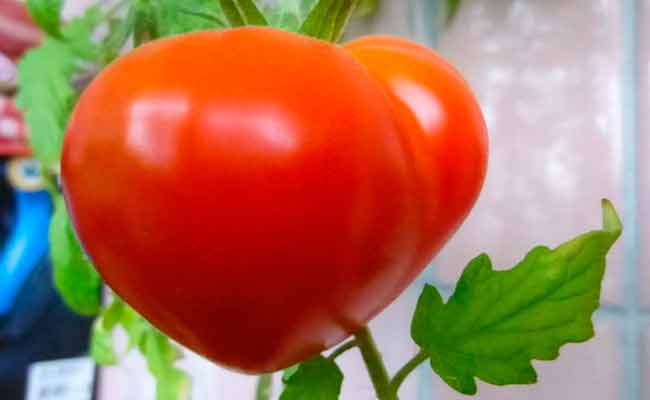

Reviews from the photo indicate that all Budenovka tomatoes have the same average sizes. This is very important for long-term storage and transportation over long distances. The taste of the tomato pulp is a little sweetish, and inside it contains very few seeds.
But their main advantage is that they ripen at the beginning of July even in Siberia. Moreover, the ripening process for this variety is extended until the beginning of autumn. Thus, you can feast on fresh tomatoes for two months.
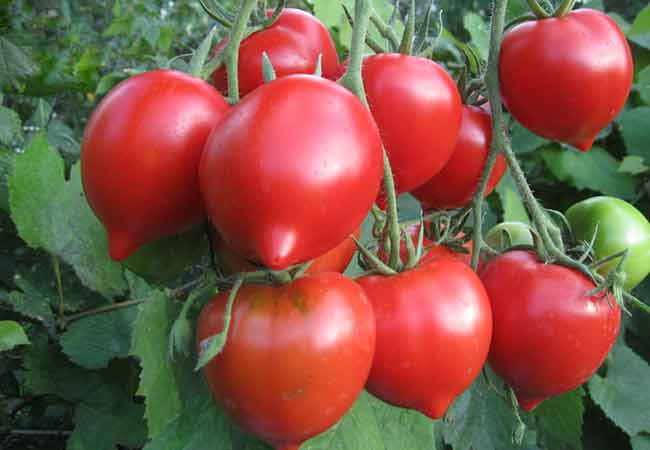

Budenovka tomatoes bear fruit abundantly both in greenhouses and in the open field.They are considered ideal for canning and pickling, because their peel is dense, they are large, moderately fleshy.
Advantages and disadvantages
Budenovka has a number of undeniable advantages:
- large-fruited;
- mid-early ripening;
- high yield;
- fruiting up to 3 months;
- resistance to nightshade diseases and pests;
- unpretentious care;
- resistance to weather changes.
Disadvantages:
- Not suitable for winter spinning as a whole.
- Since this is a hybrid, it will not work to grow it from self-collected seeds, since they do not retain quality properties.
Getting seeds from your garden
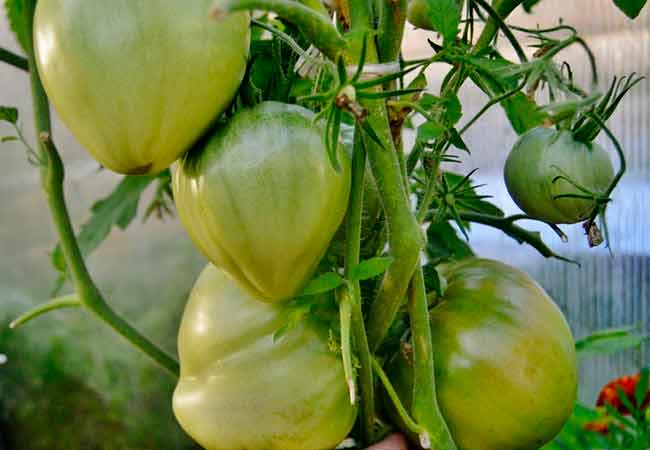

If you have never grown this tomato variety before, then it is best to purchase Budyonovka seeds in a specialized gardening store. In the future, you will use seeds from your harvest.
To do this, select strong-looking, fully ripe tomatoes. However, many gardeners argue that not fully ripe fruits can be selected for seeds, but at the same time they need to be kept in the sun for several days until fully ripe.
In order not to damage the seeds, stick to this simple technology:
- remove the skin from seed tomatoes, place them in any container filled with 2/3 of its volume with water;
- then place the container in a warm place;
- somewhere in 5-7 days the tomato pulp will turn sour and precipitate, while the seeds will remain on the surface of the water.
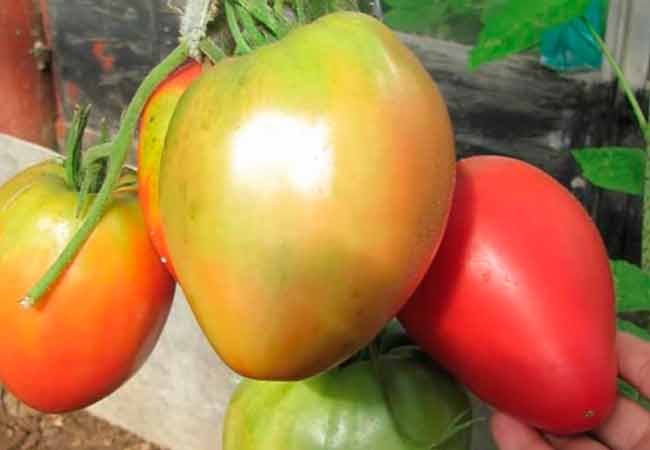

This method eliminates the possibility of damage to the seeds when they are removed from the pith of the tomato.
Be sure to rinse the seeds obtained in this way with clean water, dry at room temperature on a towel. It is important to dry them well so that not a single grain swells during storage. Store dry seeds in a sealed glass container.
Do not fill the dishes with seeds to the very top. Better to fill it only halfway. If you do everything correctly, then such seeds can be stored for more than one year.
Sort the seeds before you start growing your seedlings. First, select the most beautiful and strongest seeds. Then prepare a 1.5% solution of salt in water, pour the seeds selected for sowing into it. Soon healthy seeds will sink to the bottom of the dish, and empty and unfertile ones will float up. It is clear that you need to get rid of the floating seeds, they will not be useful to you.
If you plan to grow Budenovka tomatoes in a greenhouse, then plant the seeds in mid-March. If outdoors, it can be done later. Before sowing, place the seeds in a weak solution of potassium permanganate for a short time. This is done to kill bacteria. Then soak the seeds in a growth-stimulating solution for several hours, rinse with clean water.
Disease and pest control
Tomatoes are prone to various fungal diseases and pest attacks, but there are species with increased disease resistance, which makes them the leaders among domestic varieties.
The description of fungus and pest control is different. The first is eliminated with special preparations - fungicides, the second - with preparations - insecticides and folk remedies. Plant preservation and yield increase depends on the correct choice of protection method.
Fungus
Take preventive measures that are designed to increase plant endurance. The bushes are treated several times per season with microbiological solutions. Each drug is selected individually, based on the signs of the disease.
Vegetable crops suffer from insufficient air circulation and high humidity. It is better to start processing without waiting for the appearance of signs of the disease. If the bushes are affected, treatment should be started immediately, since fungal spores spread to neighboring plants. Dead tomatoes are removed from the garden and burned.
"Fitolavin"
The drug "Fitolavin" is classified as an antibiotic, it retains its effect for 50 days. It is used no more than 2 times per season, because it has a cumulative effect. The characteristic of the drug allows you to process the plant at any stage of development: starting with seedlings, when 1-2 true leaves appear, and ending with a fruiting bush.
The agent is classified as toxicity class 3, therefore, plants are treated with it in protective equipment (gloves and a respirator). It prevents phytosporosis of blackleg. A solution is prepared from 20 ml of the drug and 10 ml of water. Processing takes place taking into account the consumption of 20-40 ml of solution per bush.
"Cuprolux"
The preparation "Kuprolux" protects plants from damage by late blight, which causes the death of all bushes in the garden. It contains multi-active copper that destroys fungi. Tomatoes are treated with a solution (6.5 g per 1.3 l of water), which is enough for an area of 25 m².
During the whole season, no more than 2 treatments can be done, and the harvest is carried out on the 5th day after spraying. The effect of the drug lasts from 8 to 14 days, so re-treatment will be required no earlier than 10-12 days.
"Profit Gold"
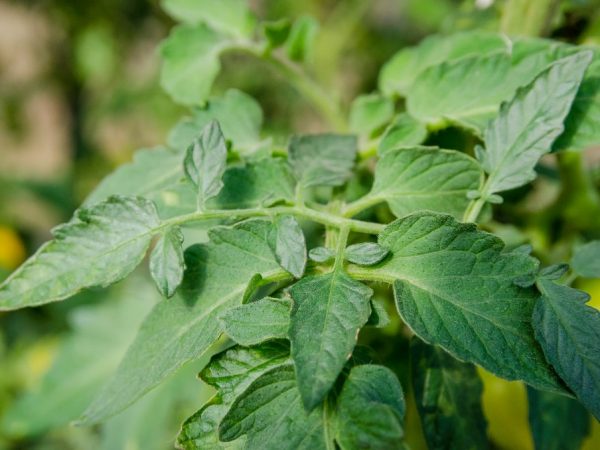

Treatment will protect plants from disease
Means "Profit Gold", containing copper, prevents the development of late blight (leaf and stem) and alternaria. The composition of the product is represented by 2 active ingredients. The first substance forms a film on the leaves, which expands when exposed to moisture, the second - penetrates into the structure of the plant, blocking the development of the disease.
The solution is prepared in the following proportion: 6 g of the drug per 10 liters of water. It is enough to cover an area of 100 m². Re-spraying is carried out after 8-14 days. It is advised to process tomatoes with this solution no more than 4 times per season. It is allowed to start harvesting on the 15th day after prophylaxis.
Pests
Vegetable crops are susceptible not only to fungal diseases, but also to pest attacks. Depending on the variety, different insects can affect plants. The most common are the bear and wireworm. It is not difficult to determine that a plant is suffering from pest attacks.
Withering of the green part without visible damage indicates damage to the root system. Examine the area carefully and if you see signs of an insect pest, take the necessary action as soon as possible. Delay will lead to the weakening or death of the plant, reduce its yield.
Medvedka
A folk trick helps to cope with the bear, which involves the use of 5-liter plastic bottles. The method is quite costly, since a sufficient amount of material is required. The upper and lower parts are removed from the bottles, after which they are immersed in the ground by 20-30 cm, and at least 5-8 cm remains on top.
Tomatoes are grown in these containers, and the bear cannot get to the roots. If you don't have time to create a fence for each bush, use the Thunder tool. The basis of the drug is an insecticide "Diazon", combined with food components that attract the bear.
The territory is treated 5-10 days before the date of the planned planting of seedlings in open ground. Each hole is filled with 1 tsp. preparation, after which the soil is moistened. The result should be expected in 2-3 days.
Wireworm
A homemade trap, which is made from an iron rod and vegetables, will help to eliminate the wireworm. Pieces of raw potatoes, beets, carrots are put on a metal base and buried to a depth of 20 cm so that the ends of the wire remain above the ground. The bait is removed from there for 3-4 days and burned.
():
This method is used in the spring before planting seedlings, as soon as the air and soil temperature warms up to + 5-10 degrees.
Thorough destruction of the pest requires the introduction of Barguzin into the soil. Its effect appears after 3-4 days and lasts for at least 20 days, after which you can eat the fruits. The drug is produced in the form of granules and emulsion. In the first case, the agent is lowered to a depth of 15-20 cm, in the second, it is sprayed onto the bushes.
Yield increase methods
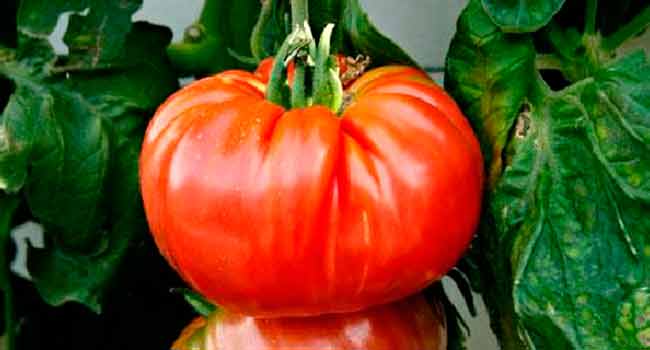

Oddly enough, but the excessive yield of tomato, which is shown by the photo, gardeners in the reviews are often attributed to the disadvantages of the variety. If you do not limit the number of flowers on a bush, then under the weight of ripening fruits, and they are large enough for a plant, the branches simply break. Therefore, during flowering, leave 6 flowers on each bush, and cut the rest. Do not be lazy to tie up the stems of the bush in time.
During the ripening period, it is advisable to feed Budenovka with fertilizers containing potassium and phosphorus. Many gardeners water the tomatoes with chicken egg shell broth instead.
Do not plant more than two or three bushes on one square meter, as they grow a lot.
Do not water this variety unnecessarily. In this case, before flowering, water the soil without fail. Do the same when the first ovaries appear and at the beginning of fruit ripening.
To prevent late blight and other diseases, spray the bushes with microbiological preparations of a general spectrum of action.
Harvest as the fruit ripens. If there are too many of them, then collect the unripe tomatoes so that new ones appear in their place. Brown tomatoes ripen quickly in the sun and even indoors. The taste of the pulp is not lost from this.
Possible growing problems
The Budenovka variety is quite resistant to diseases and endowed with good immunity. Despite this, as a preventive measure, it is necessary to carry out the following manipulations:
- eliminate excess moisture and follow the rules of daylight hours;
- so that the plants are not struck by brown spot, use garlic infusion;
- from attacks of a spider mite, use a soap solution, which is used to wipe the affected areas.
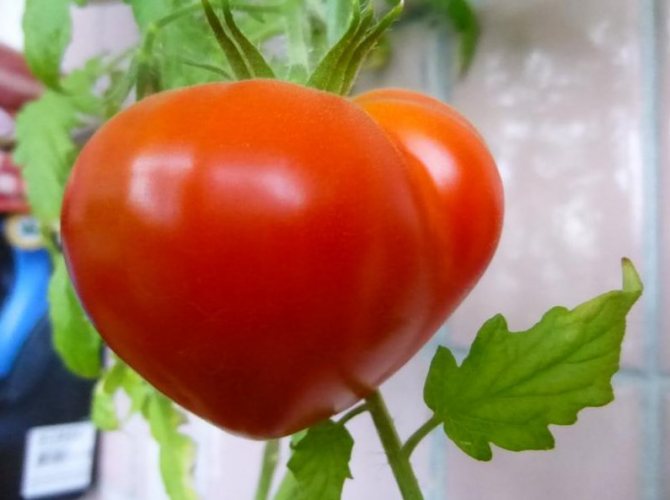

Care technology
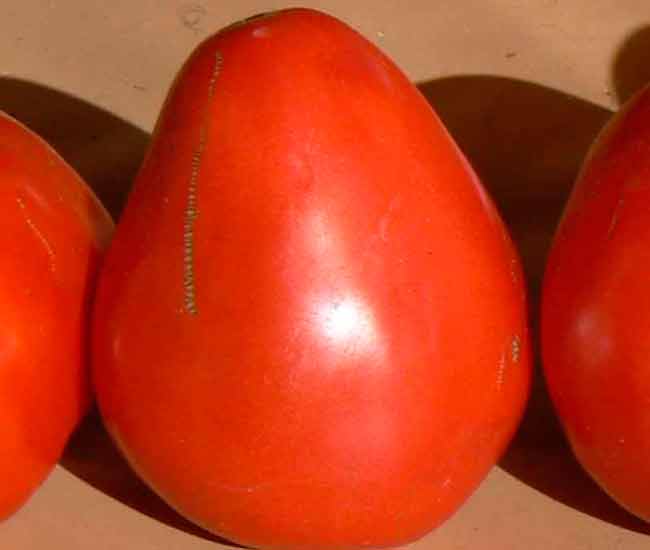

The variety does not require any special growing conditions, plant the seeds of the Budenovka tomato in rows, at a distance of 2 cm from each other. They do not need to be pressed into the soil. Better just pour a layer of earth no more than 2 cm thick over the sowing.
After that, water the sowing abundantly, cover with transparent film and place in a warm, well-lit place. Remove the film only after the sprouts appear. Until this time, air the sowing daily, monitor the soil moisture. If necessary, moisten it with a spray bottle. Watering the sowing from a watering can is not worth it, since the distribution of moisture in the soil will turn out to be uneven.
After 2-3 leaves are formed on the sprouts, you can plant tomato seedlings in separate containers. Any dish with a volume of 250-300 ml is suitable for this, but it is better to use peat or paper cups. Seating in separate containers contributes to better formation of the root system.
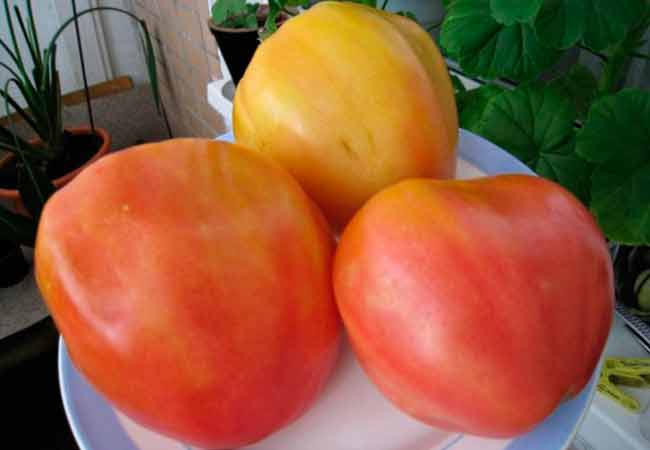

The cups are also convenient because the tomatoes can be planted in the ground without disturbing the plant roots, so it will be possible to avoid diseases associated with adaptation after transplantation. Both peat and paper in the soil quickly decompose and do not interfere with root growth.
Start hardening the seedlings two weeks before planting. To do this, simply take the plants out into the open air, increasing the time they stay there every day. It is important that at least 10 leaves are formed on each sprout of the seedling. Planting in open ground can only be started after the ground has warmed up well.
Immediately before planting in the garden, prepare holes 5 cm deep.Pour 10 grams of humus or superphosphate at the bottom of each hole.Next, immerse the cups with seedlings in the holes, sprinkle a little with earth, water abundantly and loosen the top layer of soil.
Transplanting seedlings into the ground
The grown seedlings are planted in a permanent place after the formation of the first cluster with inflorescences, but the weather conditions of the region should be taken into account: if there is a threat of recurrent frosts, it is better to postpone the transplant.
Seedlings are transplanted into the ground in different ways: most withstand a distance between plantings of 30-40 cm with deepening of the roots, but there is a 60x35 option, where the first number indicates the distance between the rows, and the second between the shoots.
In the process of planting, fertilizers are added, which are applied to the hole and watered. Seedlings are immersed in holes along with peat glasses and sprinkled with earth. It is better to plant in the evening so that the plants quickly adapt and do not suffer from the scorching sun.
Testimonials
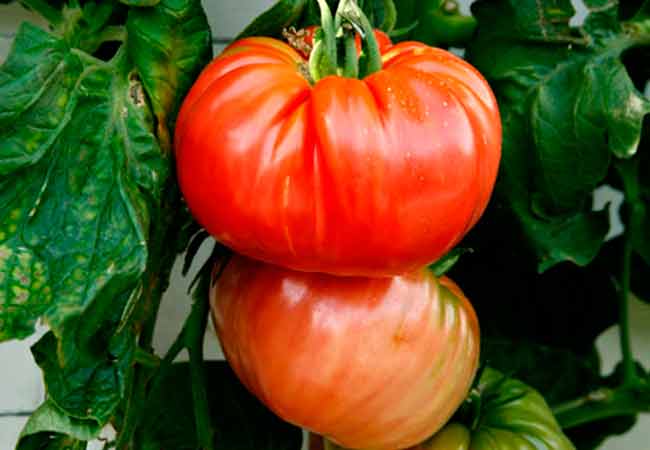

Of course, before choosing a Budenovka tomato for planting, it is worth studying the reviews of those people who have already grown it before. This variety bears fruit within three months. Most people really liked the taste of the fruit. Tomatoes are good both fresh and canned.
Those gardeners who grew these tomatoes advise one more thing. If in your area there is a large difference between day and night air temperatures, then you better grow Budenovka tomatoes in greenhouses. These tomatoes crack from sudden changes in temperature.
Pros and cons of the variety
- The advantages of the Budenovka variety include the following points:
- high yield;
- early maturity;
- large enough fruits;
- resistance to pests and diseases;
- self-pollination;
- resistance to weather changes.
- There are also some disadvantages:
- mandatory regulation of stem growth;
- tying shoots to supports;
- in the middle lane can only be grown in greenhouses.
An improved analogue of Budenovka tomatoes is the Velmozha variety.
It is true that Budenovka is a favorite variety of gardeners.
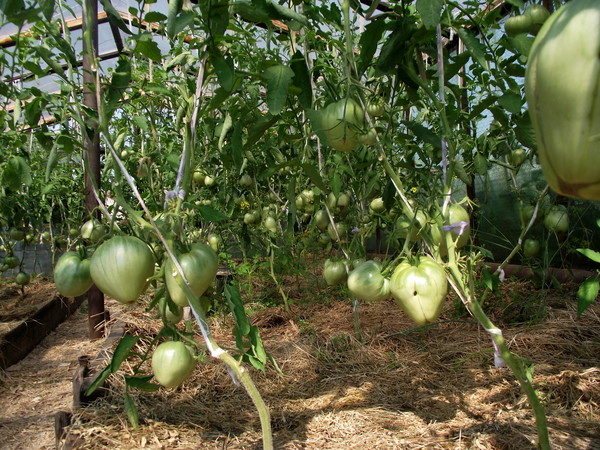

Tomato variety Budenovka gained wide popularity due to its unpretentiousness to growing and care conditions
This variety is often planted, as it has the following qualities:
- Grows and matures In any weather;
- The fruits are good food flavoring qualities;
- Absolutely disease resistant tomato type.
Tomato Budenovka forum. The history of growing tomatoes Budenovka
As well as about the Oxheart, about Budenovka, you can find different versions regarding the origin. The authorship is attributed to both the State Agricultural Institute of Vegetable Crops and the Siberian Research Institute. I tried to find organizations with such names, but, alas, they did not show up in Google search results. Also, confusion occurs when buying seeds: Budenovka from different firms differ from each other. On one of the forums, a gardener posted such a photo.
Riddle: are these tomato seeds a Nobleman or Budenovka?
Moreover, she is sure that it is Budenovka that she grows from such seeds, and the Noble is her second name. Meanwhile, these are two completely different, little alike varieties. Here is one of the reasons for negative reviews: they sell seeds to us, it is not clear what varieties, it is not clear under what names, respectively, and I don’t understand what grows.
According to the official source, namely: the State Register of Breeding Achievements, the originator and copyright holder of the Budenovka tomato variety is the seed-breeding one. An application to the Variety Testing Commission was submitted in 2001, and in 2002 the variety was officially recognized and approved for cultivation in all Russian regions. However, Budenovka appeared in private gardens much earlier, but it was only certified in 2002 by the state.
Now there is an official description of Budenovka from specialists who tested this variety.And in order not to grow twins and various fakes, it is better to buy seeds from the author or originator, in this case - with the marking on the package "Gisok". Budenovka is not a hybrid, so it is enough to buy the seeds once, and then collect them every year from the fruits grown independently.
How to prepare seeds for growing
The cultivation of the variety is carried out using seedlings. The yield of the crop depends on the quality of the seeds. Therefore, before sowing, the seeds should be sorted out, separating the larger and healthier ones. Then you need to treat them with a weak solution of manganese. To improve the quality of the seeds, they should be immersed in a growth enhancer just before planting in the ground.
Expert opinion
Stanislav Pavlovich
Gardener with 17 years of experience and our expert
Ask a Question
On a note! To get quality seeds for planting, just place the tomato in a jar of water. When it sours, good seeds will float to the surface.
The seeds can be obtained from the fruit yourself. But this is only possible for 10 years. After the specified period, the plant loses its immunity, therefore, in the future, it is not suitable for further reproduction.
See also Description and features of growing tomato Cranberry in sugar
The seedling soil must first be calcined in the oven. The seeds are placed in the soil to a depth of about 3 cm. To accelerate the emergence of seedlings, the containers are covered with cling film.

